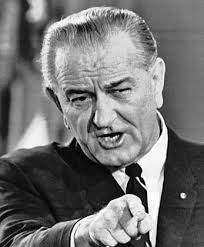Gold and Silver coins
Although collectors and dealers refer to coins by their “metal names” most countries no longer use precious metals in everyday coins. Gold, silver, and other precious metals are only used in bullion or commemorative coins today. For example, the United States stopped using gold in the 1930’s and silver in the 1960’s. Why you ask, well the changes were made due to the fear of a chronic shortage of US coins. The US Government knew that people would horde, or keep, coins made with precious metals, thus taking them out of circulation. That is a problem, because, well we need coins to buy and sell stuff!
In 1933, during the heyday of the Great Depression, President Roosevelt barred US citizens from holding “monetary” gold including gold coins via Executive Order. He ordered that all gold coins be returned to the US Treasury, where it was melted and cast into gold bars. By the way, that means if you have pre-1933 gold, you have a valuable coin! Call Me!
The Coinage Act of 1965, was designed to, and did achieve the goal of, fundamentally changing the composition of our coinage. This act eliminated silver from circulating dimes and quarters, and changed the content of half dollars from 90% to 40%. So after 173 years of making silver coins, the US Treasury changed its formula. This is why some collectors focus on certain time periods, and why dimes from before 1965, no matter how banged up, are still worth more then a comparable coin from, let’s say 1982.
President Johnson feared that with the value of silver rising, people would horde coins.
“Our uses of silver are growing as our population and our economy grows. The hard fact is that silver consumption is now more than double new silver production each year. So, in the face of this worldwide shortage of silver, and our rapidly growing need for coins, the only really prudent course was to reduce our dependence upon silver for making our coins.”
With the passage of the Coinage Act of 1965, all US legal tender coins would be “clad” or a mixture of copper and nickel.
Also of note – the Act of 1965 made all coins and currency of the US legal tender, meaning that no matter the year/ age of US money, it must be accepted by the US government for “all debts, public charges, taxes and dues”. This does not mean that private business have to, but most work off the policy that, if the bank takes it, we take it.
To test this, take a $2 bill or a Kennedy Half Dollar to your grocery store or movie theater. They may think you are trying to pass a counterfeit or look at you strange, but they have always taken it in my experience! Plus it really messes with their drawer at the end of the night!
But you think, “I can buy US coins made of silver or gold that is newer than 1966“, you must be crazy! (call me, maybe?) Well yes you can! Never one to miss out on an opportunity to “make money” the US Mint (or Treasury) does create special collector coins. These coins have a nominal face value of 50c to $50 or more, and although you could use them to buy a candy bar (See Legal Tender above), I would not recommend it. You would just literally be throwing money away, or at least out of your pocket!
These bullion, or commemorative’s, as they are sometimes referred to, are “worth” their face value at the bank. But the intrinsic precious metal value is much MUCH more, and are not spent by 99.7% of the people who have them, as they are an investment, not money. But there is always that one person……. Who just has to prove a point. My suggestion, trade all of your coins with them, then open up a safe deposit box!





